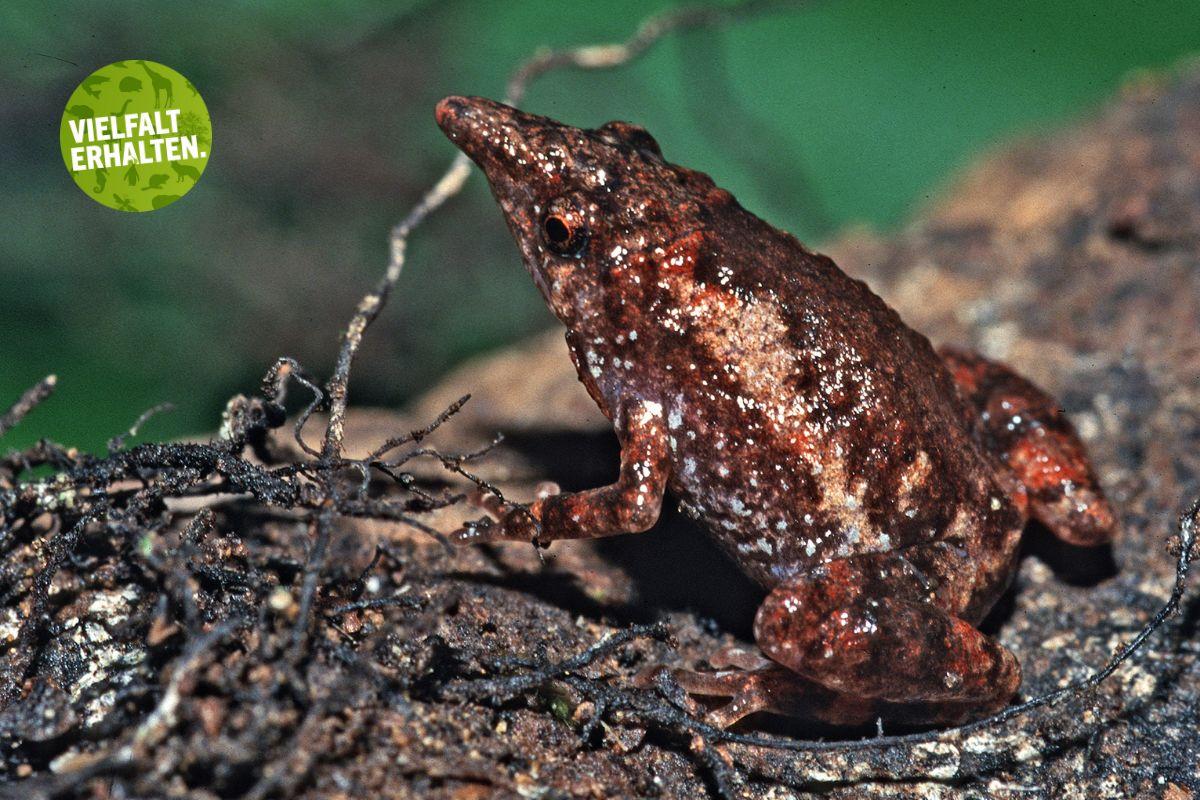Choerophryne microps is merely the size of a thumbnail. This tiny frog is one of a total of 102 new species that Dr. Rainer Günther, a Berlin-based expert on amphibians, has tracked down so far in the rainforest of New Guinea. Until 2006, which was 20 years, the taxonomist was in charge of the collection of amphibians and reptiles at the Museum für Naturkunde Berlin and undertook this research trip in 1998 with his colleague Immo Tetzlaff.
One evening, the two researchers were walking along a river. Again and again they heard a croaking frog call. Günther had never heard this call before. The explorers followed the call, listened, walked along quietly, listened, sensed further ahead - and finally they were certain: the frog was sitting on or near a thin little tree. Günther pointed his flashlight. And there he sat – his pointed nose peeking out of a small cavity in the stem. Günther carefully closed the mini-cave with his hand, Tetzlaff cut the stem, the small branch landed in a bag and the frog jumped directly out of its mini-cave into the bag. Carefully, they carried the small animal to their camp.
Initial examination showed that the frog resembled another frog that had been described back in 1911. So had the "little nosed frog" been discovered earlier? But a second look revealed striking differences in detail. Günther had discovered a frog species that was still unknown. He named it Choerophryne microps and published his discovery in 2008.
Like nearly 200,000 others, this frog is one of the stars of the museum's scientific research collection. Why? These animals, on the basis of which newly discovered species were described, are the biological yardstick to orient oneself in the world of diversity. Types are what they are called, and their importance – like the primordial meter for physics – is central to understanding biodiversity and, ultimately, to preserving and promoting it.
More than 450 frog species are currently known from New Guinea and the surrounding islands, but Günther is firmly convinced that more than 1,000 are found there. And he seems to be right. In 2021, he described another eleven new frog species from New Guinea, and more new descriptions are already in the pipeline.
Curious? The detailed story can be read in Michael Ohl's book entitled "Expeditions to the First of Their Kind", newly published by DTV-Verlag.
This text is part of the campaign "Safeguarding nature!" for the World Nature Summit 2022 in Montreal.
Text: Dr. Gesine Steiner
Picture: Dr. Rainer Günther
